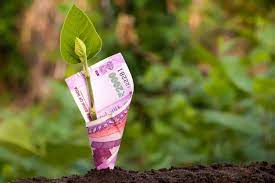Green Deposits: All the Information You Need
The Reserve Bank of India (RBI) has announced rules for banks and non-banking financial institutions (NBFCs) to follow while accepting “green deposits,” which became effective on June 1 as part of efforts to promote sustainability and combat climate change. These green deposits are intended to support initiatives including green construction, green transportation, and renewable energy. Let’s explore what green deposits are, the sorts that are available, and the most current framework that the RBI put in place.

How Do Green Deposits Work?
A financial instrument known as “green deposits” allows people and organisations to deposit money with banks and NBFCs particularly to support environmentally friendly initiatives and activities. These deposits allow for the mobilisation of resources and their allocation to sustainable projects. The financial industry may actively aid in lowering carbon emissions and advancing sustainability by directing these monies to environmentally friendly initiatives like renewable energy projects.
Green Deposits Types
To meet the varied demands of depositors, green deposits are offered in a variety of formats. Fixed deposits (FDs), savings deposits, recurring deposits, and certificate of deposits are a few typical forms of green deposits. These deposits provide various characteristics and advantages, enabling people and organisations to choose the best choice in accordance with their investment objectives and preferences.
The Green Deposits Framework of the RBI
The RBI has introduced a framework for green deposits with the goal of encouraging regulated organisations (REs) to provide consumers with green deposit choices while safeguarding the interests of depositors. The framework, which went into effect on June 1, 2023, places a strong emphasis on the need to promote sustainability and resolve issues with greenwashing.
The framework’s main components are as follows:
Allocation Of Proceeds: According to RBI regulations, cash received from green deposits must be allocated in accordance with the recognised Indian green taxonomy. However, REs are expected to direct the funds obtained via green deposits towards a predetermined list of green initiatives and projects up until the taxonomy is finalised. Energy efficiency, carbon emission reduction, climate resilience, adaptation, and the improvement of natural ecosystems and biodiversity should be the main objectives of these initiatives.
The RBI’s framework includes a list of projects and activities to which the earnings from green deposits may be used. Adaptation to climate change, clean transportation, sustainable water and waste management, and green buildings are all on this list. By funding these efforts, banks and NBFCs may help create a more sustainable and greener future.
Exclusions: The framework includes a list of REs that are excluded. Projects involving the mining, manufacture, and distribution of fossil fuels, the creation of nuclear energy, and the direct incineration of waste are among those excluded. The RBI makes sure that green deposits are directed towards initiatives that are really sustainable by excluding certain activities.
Board-Approved Policy: In order to provide green deposits, banks and NBFCs must create a thorough policy that has been approved by the board. This policy should include instructions on how to receive green deposits, distribute monies, and track and report on how those funds are being used.
The RBI hopes to ease the flow of finance to green projects and activities by providing this framework, connecting the financial sector with sustainable development objectives, and encouraging environmental stewardship.
For both people and organisations, green deposits provide a unique chance to invest money in projects that advance a sustainable and environmentally friendly future. The RBI’s present structure encourages regulated firms, including as banks and NBFCs, to provide clients with green deposit choices. These deposits may significantly contribute to combating climate change and advancing sustainability by funding green construction, green transportation, and renewable energy sources. Green deposits provide us as individuals a practical way to make a difference in the world via our financial decisions.







